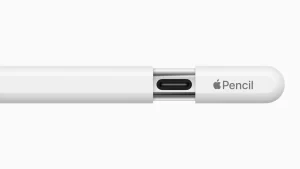For Apple, both satellites and AI, will drive iPhone sales

With Messages via satellite in iOS 18, users without access to cellular connectivity or Wi-Fi can message over satellite right from the Messages app, while maintaining end-to-end encryption for iMessage.
Satellites and AI are a double win for Apple.
• Hardware Sales Boost: Both advancements hold the potential to significantly increase demand for Apple hardware. For instance, AI-powered features on iPhones and iPads could require more powerful chips and processing capabilities, leading to upgrades. Similarly, satellite integration could enable features like emergency texting or direct satellite internet connectivity on iPhones, driving sales of new models with this functionality.
• Ecosystem Expansion: Beyond direct hardware sales, these technologies could create entirely new product categories within the Apple ecosystem. Imagine AR glasses that leverage satellites for location data or a health-focused Apple Watch that utilizes AI for advanced health monitoring.
• Long-Term Innovation: By investing in satellite and AI technologies, Apple positions itself at the forefront of innovation. This can attract top talent, strengthen brand image, and ensure Apple remains a leader in the tech industry.
Overall, satellites and AI represent exciting opportunities for Apple to not only boost hardware sales but also expand its product offerings and solidify its position as a tech innovator.
Investors hope advanced hardware required to run complex artificial-intelligence-based computing will drive Apple iPhone users to upgrade their handsets, but satellite connectivity might matter more.
That would be a win for businesses with satellites, including Elon Musk’s SpaceX.
[S]atellites should allow Americans living in so-called dead zones to have cell coverage, and in turn make iPhones worth buying for those customers.
“Satellites will play a critical role in finally filling in the suburban coverage holes created by the NIMBYs,” wrote LightShed’s Walter Piecyk and Joe Galone on Tuesday. NIMBY is short for “not in my backyard,” and that kind of thinking is a problem for wireless carriers looking to add cell towers to expand and improve network coverage.
Satellites, however, are in no one’s backyard. The space-based solution “will broaden the market opportunity beyond what has largely been perceived as limited to a distressed hiker lost in a national park,” the LightShed team added. They texted via satellite in Westchester County and were impressed with the experience.
The ability to text and, eventually, call in dead zones would be “very powerful” and enough to drive phone sales, they say. Users have to have, at least, an iPhone 14 to make it all work.
Apple’s satellite network provider is Globalstar which currently has 24 satellites in orbit. T-Mobile is partnering with SpaceX, which has thousands of small, low-cost satellites in orbit. (SpaceX also offers its Starlink Wi-Fi business using those same satellites.) Verizon and AT&T have teamed with AST SpaceMobile.
Support MacDailyNews at no extra cost to you by using this link to shop at Amazon.
MacDailyNews Note: Here’s iJustine demoing iOS 18’s iMessage via Satellite capability:
Please help support MacDailyNews. Click or tap here to support our independent tech blog. Thank you!
Support MacDailyNews at no extra cost to you by using this link to shop at Amazon.
The post For Apple, both satellites and AI, will drive iPhone sales appeared first on MacDailyNews.


